Discharge care for families navigating congenital heart disease
Challenge
How might we use human-centered design to improve the congenital heart disease discharge process at Dell Children’s Hospital for single ventricle patients, families, and the care team?
Context
People who are diagnosed with congenital heart disease (CHD) often face years of complex medical care. One in every 100 babies born in the United States will be diagnosed with CHD, and a quarter of those infants will require surgery or other procedures in their first year of life. These patients receive care from a very large team, including but not limited to physicians, nurses, advanced practice providers, respiratory therapists, speech therapists, nutritionists, and social workers. With so many care providers involved—and thus multiple priorities in play—discharge can quickly become complicated.
A team of five learners in the M.A. in Design focused on Health program sought to make a positive difference in Dell Children’s congenital heart disease discharge process from hospital to home for patients, their families, and the care team.

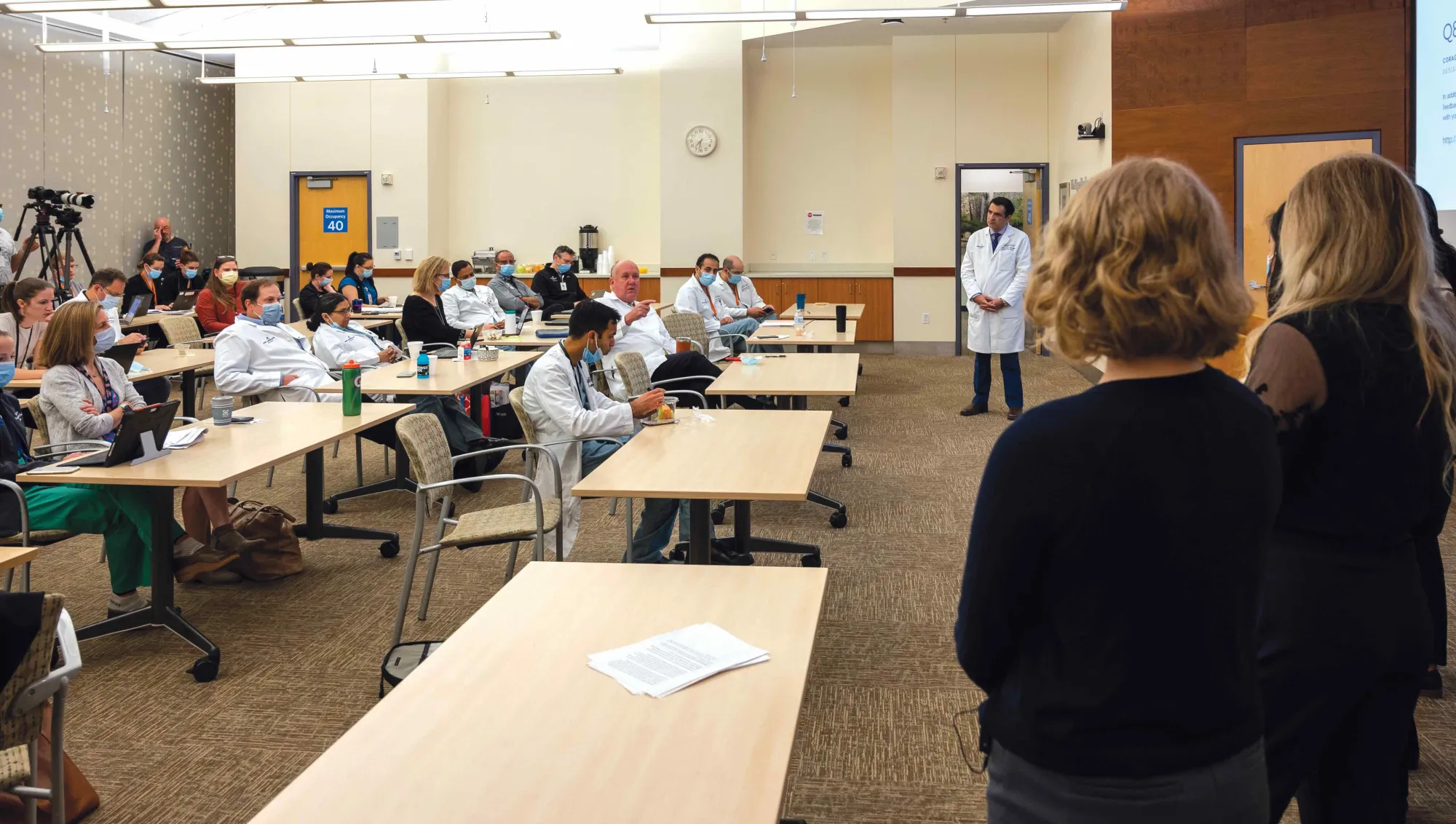
Approach
Target interventions that provide a sense of progress and facilitate deeper collaboration between everyone involved in the discharge process.
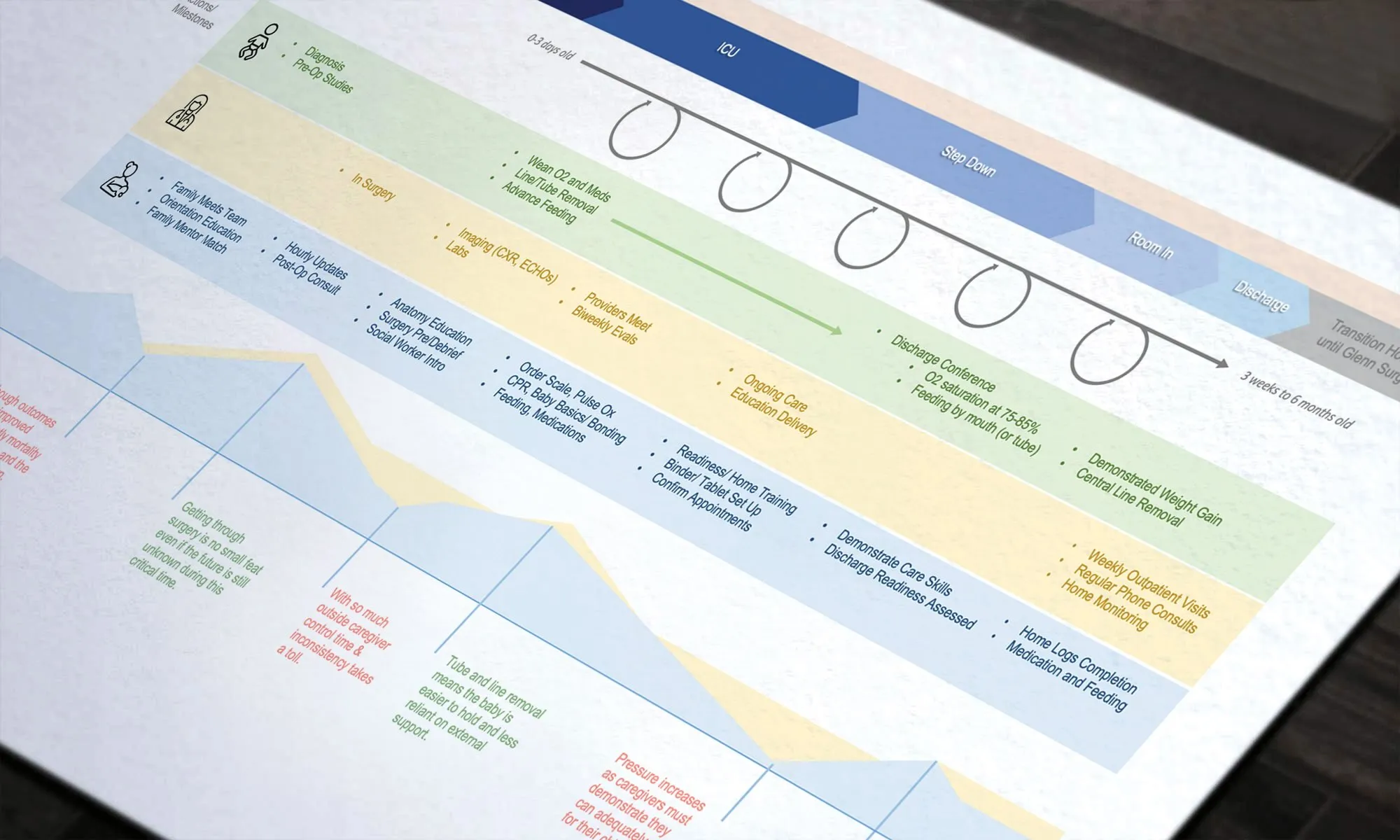
Insights
- The high stakes of caring for a medically fragile child complicate roles and responsibilities.
- Every child’s journey is unique, but families still need guideposts along the way.
- Being in the ICU means it is an emergency, even as clinical status changes.
- Both caregivers and the care team yearn for consistency and standardization to alleviate anxiety.
- Parents are grappling with complex demands and limited support, and these challenges are intensified by structural gaps in access to health-related services.


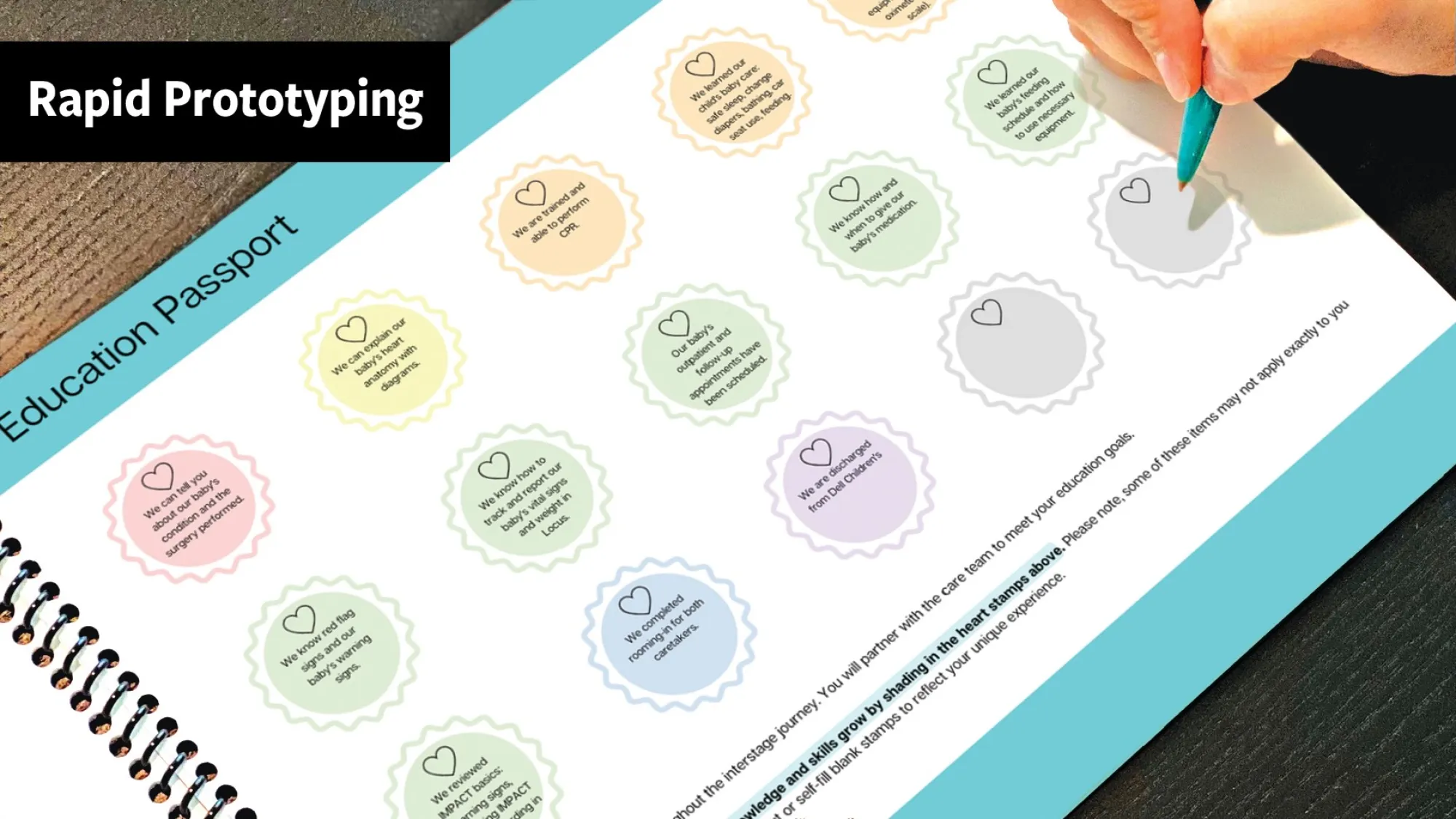
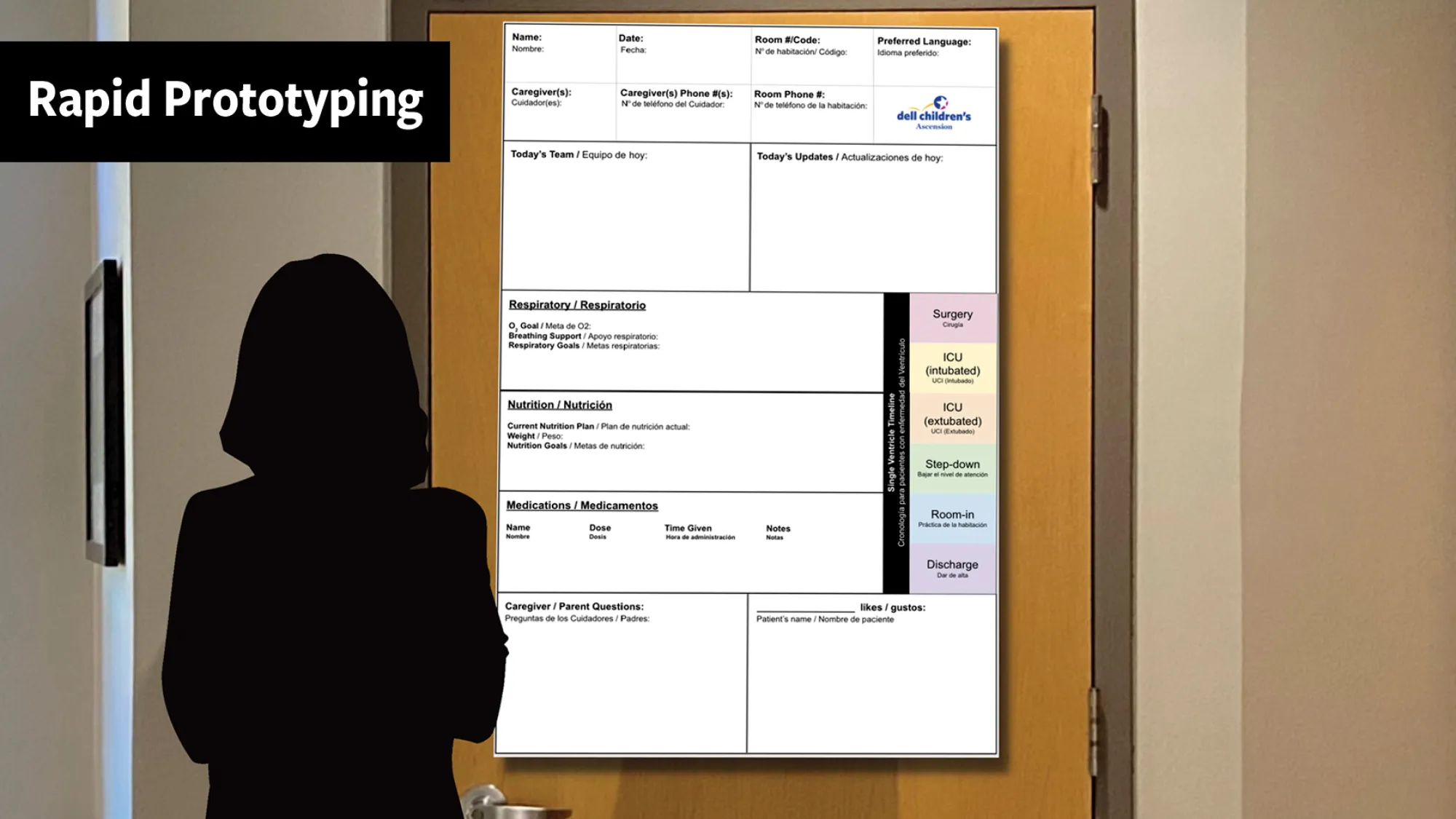
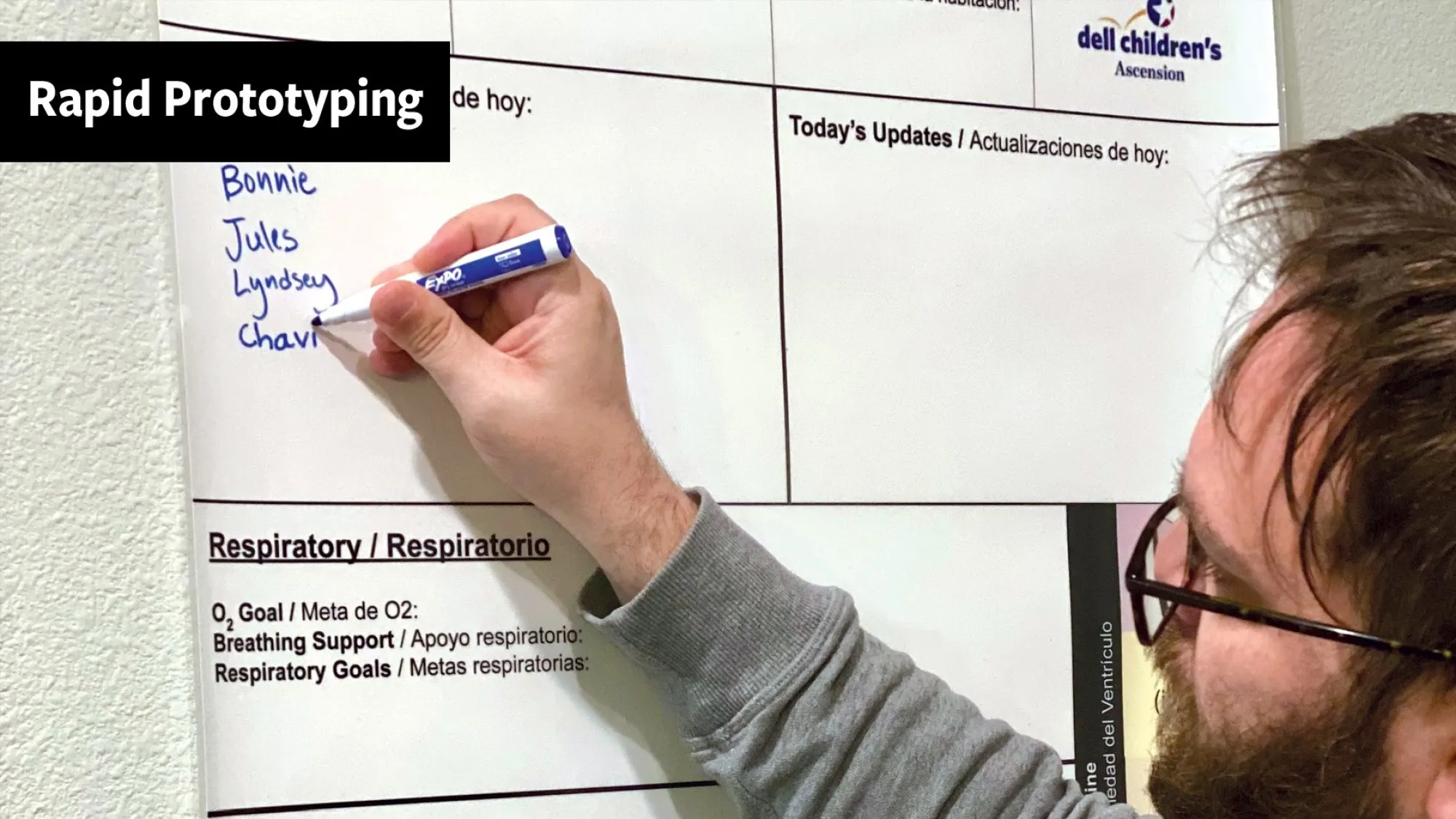
Outcome
Improved coordination between CHD families and care teams.
A complementary set of design interventions improves communication between families and providers, alleviating daily stresses for both.
A specialized workbook empowers parents to document their child’s goals and milestones. It breaks down stages of care that may be overwhelming to understand so families can engage more deeply with their child’s care.
A redesigned care board mirrors the pathway depicted in the workbook and includes interactive pieces that externalize movement through the clinical phases, supporting the exchange between families and providers.
The Dell Children’s team hopes to move forward with this pilot program, which aims to empower patient families and caregivers in what is often an unpredictable time. In addition to piloting, the clinical and project teams will be partnering on future studies and potential publication as to the success of their interventions in the context of the project’s metrics.




Learn More
Find out more about Dell Children’s Medical Center.
Design Team
Nikolette Amoros
Chavie Cramer
Bonnie Du
Madeline Hanes
Lyndsey Wang
Project Summary
To improve the complex discharge process for families of children with congenital heart disease, students collaborated with Dell Children’s Medical Center to design tools that enhance communication and reduce caregiver stress. The resulting workbook and care board clarify next steps, support clinical collaboration, and empower families during a medically and emotionally intense transition from hospital to home.
Project Contributors
Dell Children’s Medical Center

